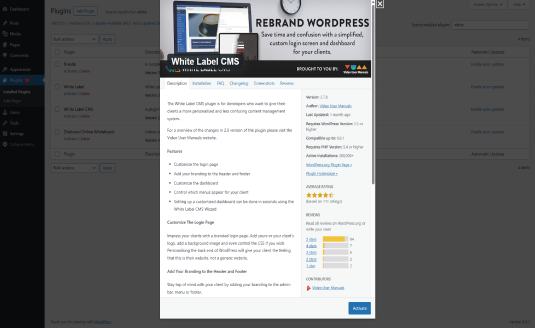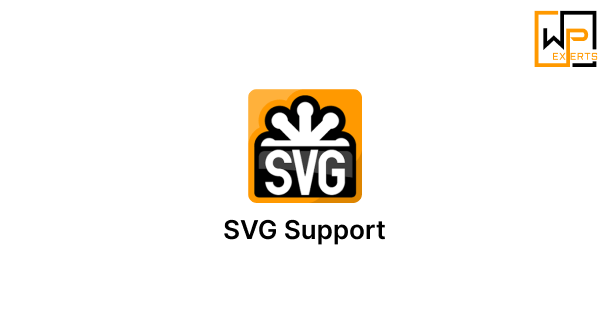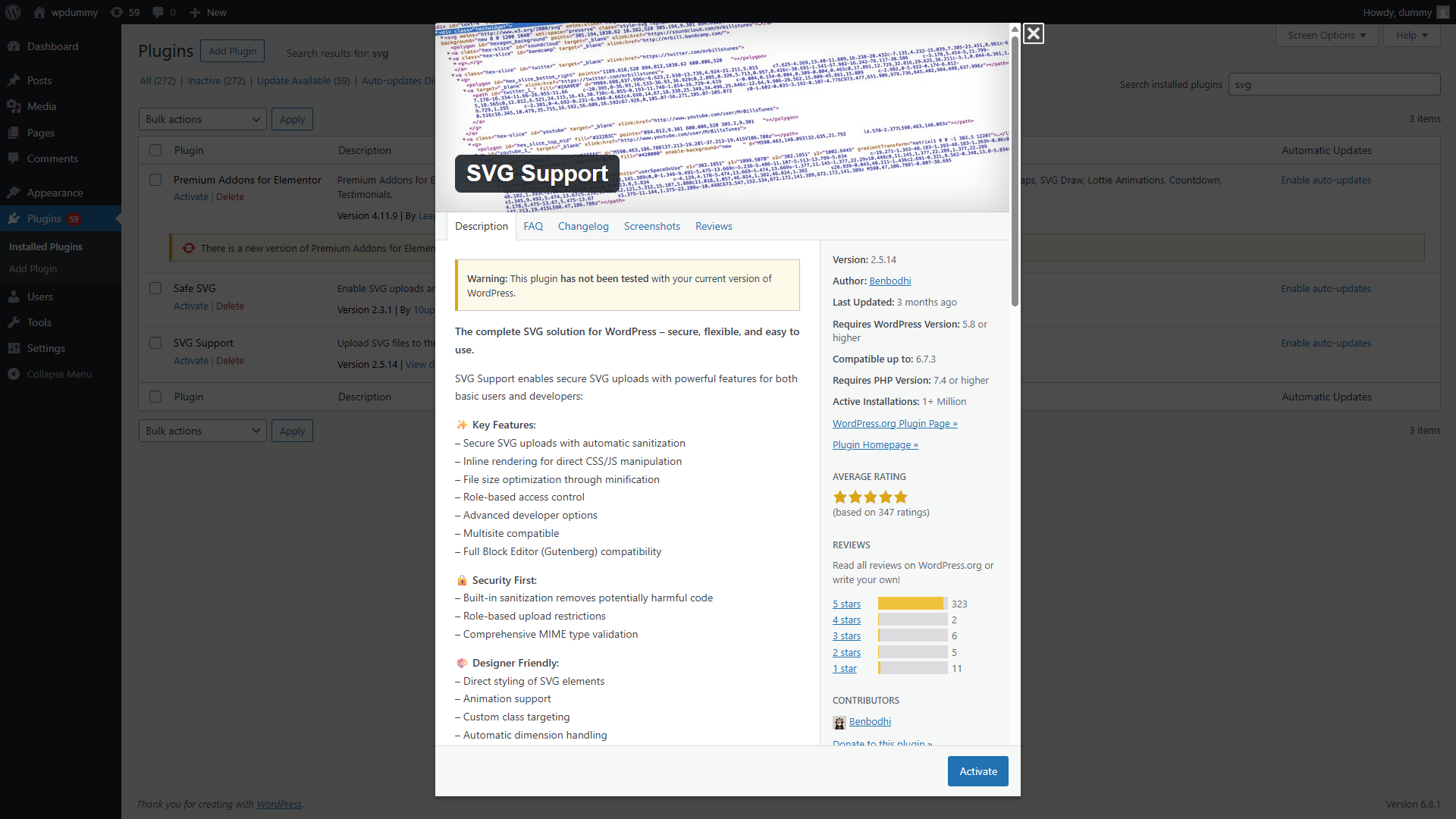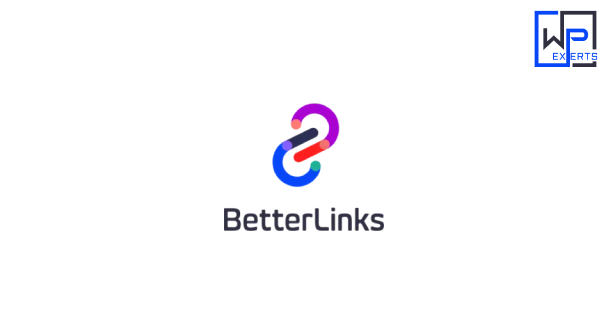SVG Support WordPress Plugin – A Complete Overview
SVG Support is a popular WordPress plugin that enables full support for Scalable Vector Graphics (SVG) files within the WordPress media library. SVG files are widely used in modern web development due to their small size, scalability, and ability to retain high quality at any resolution. By default, WordPress does not allow uploading SVGs due to security concerns, but SVG Support solves this limitation safely and efficiently. This plugin is especially useful for developers, designers, and website administrators who want to enhance visual elements with crisp, resolution-independent graphics.

What Are SVG Files?
SVG stands for Scalable Vector Graphics. Unlike raster images (such as JPG or PNG), SVG files are vector-based, meaning they are composed of XML markup that describes shapes, paths, and colors. This format allows SVGs to scale without losing quality, making them ideal for responsive web design, logos, icons, and animations.
Key advantages of SVGs:
- Resolution-independent: They look sharp on all screen sizes and devices.
- Lightweight: Smaller file sizes compared to high-resolution raster images.
- Styleable: You can manipulate them using CSS and JavaScript.
- Interactive: Elements can be animated or scripted.
Despite these benefits, WordPress core does not allow SVG uploads for security reasons — since SVGs are XML-based, malicious scripts can be embedded in them. This is where SVG Support comes into play.
About the Plugin
SVG Support is a free plugin developed by Benbodhi. It enables WordPress users to safely upload SVG files to the media library, embed them inline, and control them with CSS just like HTML elements. As of mid-2025, the plugin has over 1 million active installations and continues to be widely trusted in the WordPress community.
Key Features
- SVG Upload Enablement
The primary function of SVG Support is to allow SVG files to be uploaded directly into the WordPress media library. This feature alone solves a major limitation faced by many users and developers. - Inline SVG Rendering
SVG Support allows SVGs to be rendered inline rather than as external files. Inline rendering is important for applying CSS styles or animations to individual elements within the SVG file. - Security Sanitization
The plugin offers optional sanitization of uploaded SVG files to strip out potentially harmful code. While it is always best to only upload SVGs from trusted sources, this added layer of protection helps prevent malicious attacks. - CSS Targeting
Once rendered inline, SVGs can be targeted with custom classes and styled using CSS. This gives developers great control over the appearance and interactivity of SVG elements. - Control via Shortcode and Filters
SVG Support provides shortcodes and WordPress filters to customize how SVGs behave on the front end. This includes toggling inline rendering, adding custom classes, and adjusting attributes. - Advanced Options for Developers
Developers can hook into various filters to customize how SVGs are handled. For example, it’s possible to restrict SVG upload access to specific user roles or implement additional validation.
Installation and Setup
Installing SVG Support is as simple as any other WordPress plugin:
- Go to Plugins > Add New.
- Search for “SVG Support”.
- Click Install Now, then Activate.
- Navigate to Settings > SVG Support to configure options.
Configuration Options
In the settings panel, users can:
- Enable inline SVG rendering.
- Add custom CSS class names to all inline SVGs.
- Enable or disable the sanitization feature.
- Restrict SVG uploads to administrators only (recommended for security).
You can also choose whether to allow inline SVGs on a per-file basis using a checkbox in the media uploader.
Use Cases
SVG Support is beneficial in a variety of use cases:
1. Logos and Branding
SVGs are perfect for logos because they retain quality across all screen sizes. With inline rendering, the logo’s color or animation can be changed dynamically using CSS.
2. Icon Systems
Many developers use SVG sprite sheets or individual SVG icons to reduce page weight and increase flexibility. SVG Support makes managing these assets within WordPress straightforward.
3. Data Visualization
Charts, graphs, and interactive infographics built using SVGs can be embedded and manipulated more easily when SVG Support is enabled.
4. Responsive Design
Because SVGs scale beautifully, they’re ideal for responsive layouts. SVG Support ensures these assets display perfectly across desktop, tablet, and mobile devices.
Security Considerations
Security is a major concern with SVGs because they are essentially code. A malicious user could upload an SVG file containing embedded JavaScript or XML-based exploits. SVG Support addresses this risk in two ways:
- Restrict Uploads to Admins Only
By default, the plugin can be set to only allow administrators to upload SVGs. This limits exposure to untrusted sources. - Optional Sanitization
The plugin integrates with the SVG Sanitizer Library to clean potentially unsafe elements from SVG files during upload. This removes embedded scripts and unsafe attributes.
However, even with sanitization, best practices suggest:
- Always validate SVG files before uploading.
- Avoid accepting uploads from untrusted users.
- Consider disabling inline rendering for unverified SVGs.
Pros and Cons
✅ Pros:
- Enables SVG uploads safely and easily.
- Inline rendering for CSS and JS control.
- Optional sanitization for extra security.
- Developer-friendly with hooks and filters.
- Lightweight and actively maintained.
❌ Cons:
- SVG security depends on configuration; improper use can introduce risks.
- Not necessary for users who don’t work with SVG files.
- Requires basic CSS/HTML understanding to fully leverage inline features.
Alternatives to SVG Support
While SVG Support is the most widely used plugin for this purpose, there are alternatives:
- Safe SVG – Another plugin that allows SVG uploads and includes sanitization.
- WP Extra File Types – More generic, allows additional file types but doesn’t focus on SVG-specific features.
- SVG Manager – Advanced SVG management but not as popular or well-maintained.
SVG Support stands out due to its simplicity, inline rendering features, and widespread adoption.
Conclusion
SVG Support is a must-have plugin for WordPress users who want to leverage the full power of SVG files in their projects. Whether you’re a designer showcasing a crisp, scalable logo, a developer building responsive icon sets, or a marketer enhancing UX with lightweight animations, SVG Support offers the functionality you need — while keeping security in mind.
Its combination of inline rendering, upload enablement, and sanitization tools make it a trustworthy and powerful plugin. As with any plugin, responsible usage and attention to security settings are crucial, but with proper care, SVG Support is an invaluable tool for any modern WordPress site.





